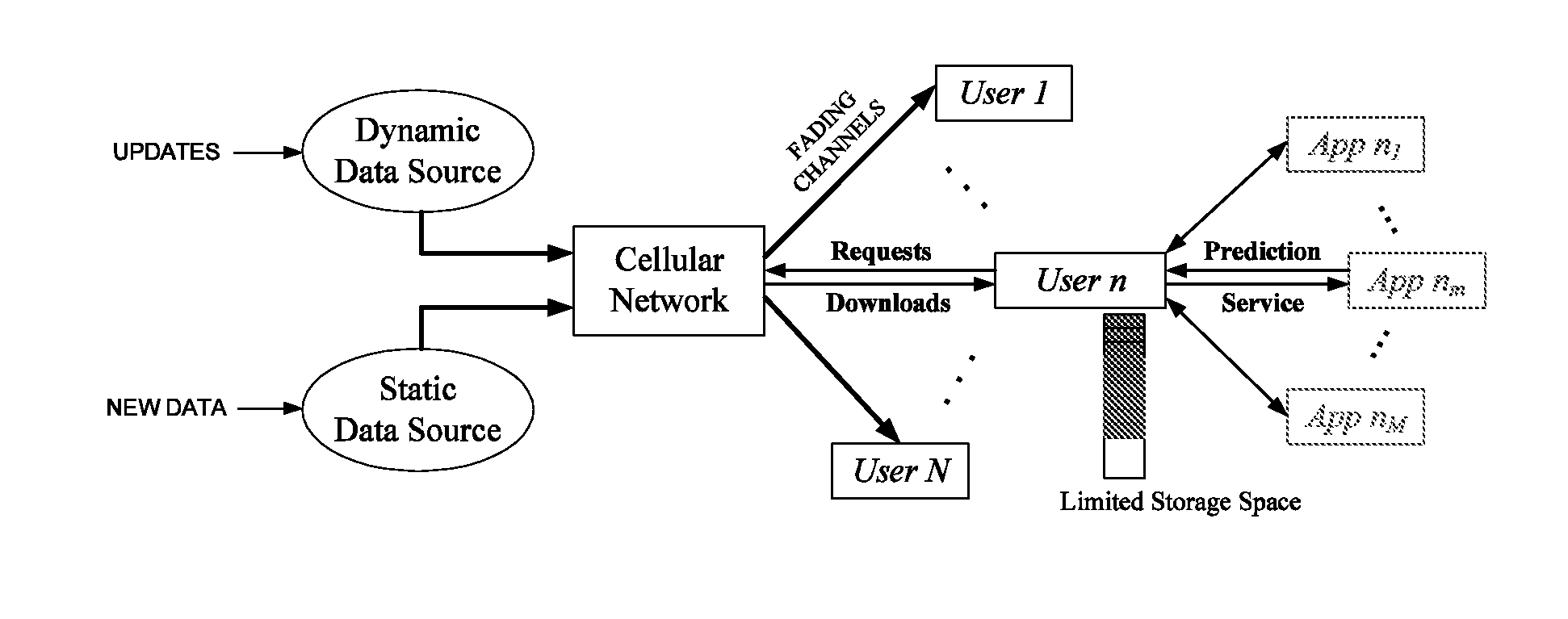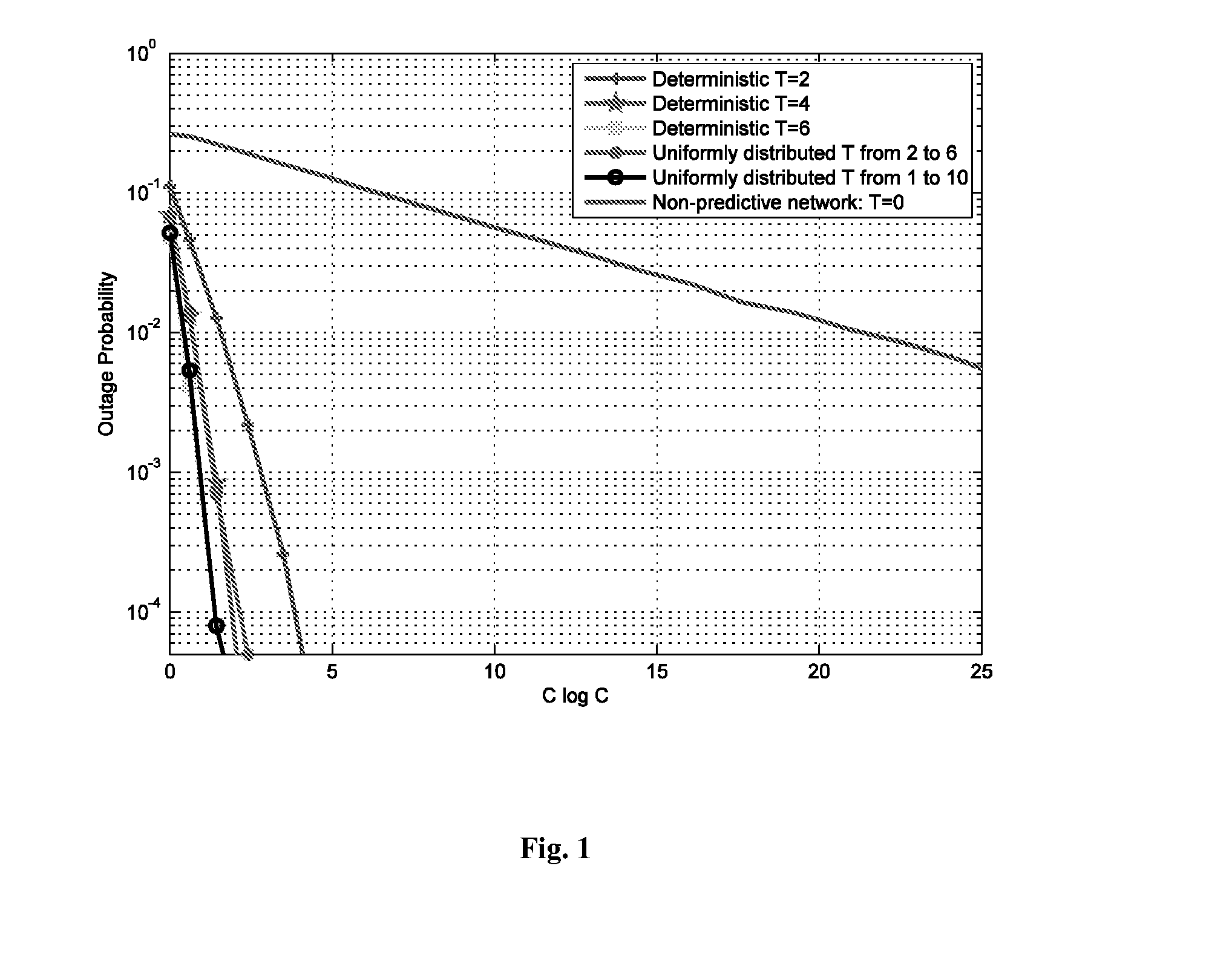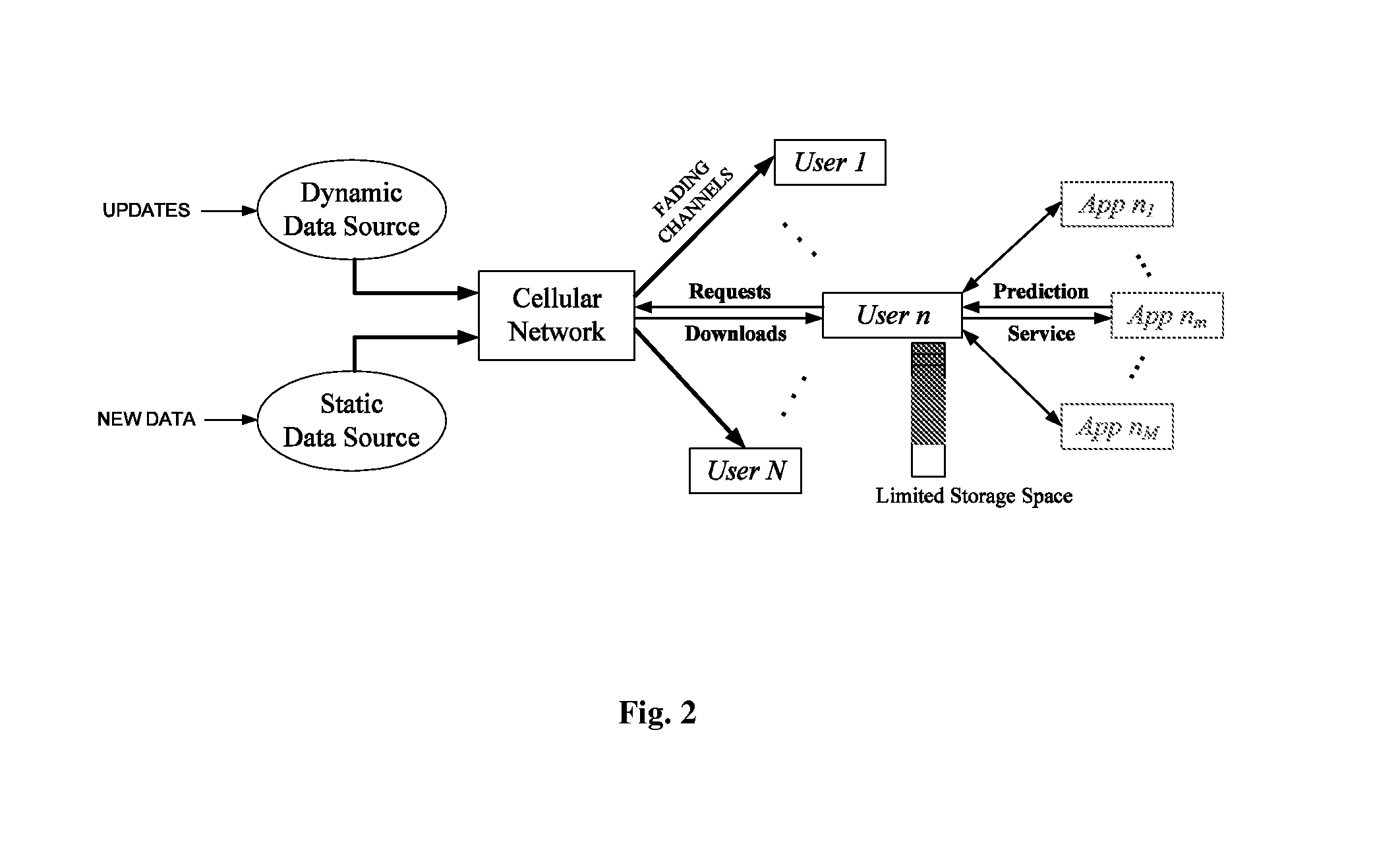Predictive network system and method
a network system and network technology, applied in the field of network traffic management, can solve the problems of disproportionately shifting the burden to underserved populations, significantly affecting the service quality of all users, etc., and achieve the effect of reducing the peak to average demand ratio and maximizing the spectral efficiency
- Summary
- Abstract
- Description
- Claims
- Application Information
AI Technical Summary
Benefits of technology
Problems solved by technology
Method used
Image
Examples
Embodiment Construction
[0014]The introduction of smart phones, most notably the iPhone, has resulted in a paradigm shift in the dominant traffic in mobile cellular networks. Whereas the primary traffic source in traditional cellular networks was real-time voice communication, one can argue that a significant fraction of the traffic generated by the smart phones results from non-real-time data requests (e.g., file downloads). As demonstrated in the following, this feature allows for more degrees of freedom in the design of the scheduling algorithm.
[0015]The usage of the wireless devices is highly predictable. This claim is supported by a growing body of evidence that range from the recent launch of Google Instant to the interesting findings on predictable mobility patterns. In one context, a relevant example would be the fact that user's preference for a particular news outlet is not expected to change frequently. So, if the smart phone observes that the user is downloading CNN, for example, in the morning...
PUM
 Login to View More
Login to View More Abstract
Description
Claims
Application Information
 Login to View More
Login to View More - R&D
- Intellectual Property
- Life Sciences
- Materials
- Tech Scout
- Unparalleled Data Quality
- Higher Quality Content
- 60% Fewer Hallucinations
Browse by: Latest US Patents, China's latest patents, Technical Efficacy Thesaurus, Application Domain, Technology Topic, Popular Technical Reports.
© 2025 PatSnap. All rights reserved.Legal|Privacy policy|Modern Slavery Act Transparency Statement|Sitemap|About US| Contact US: help@patsnap.com



